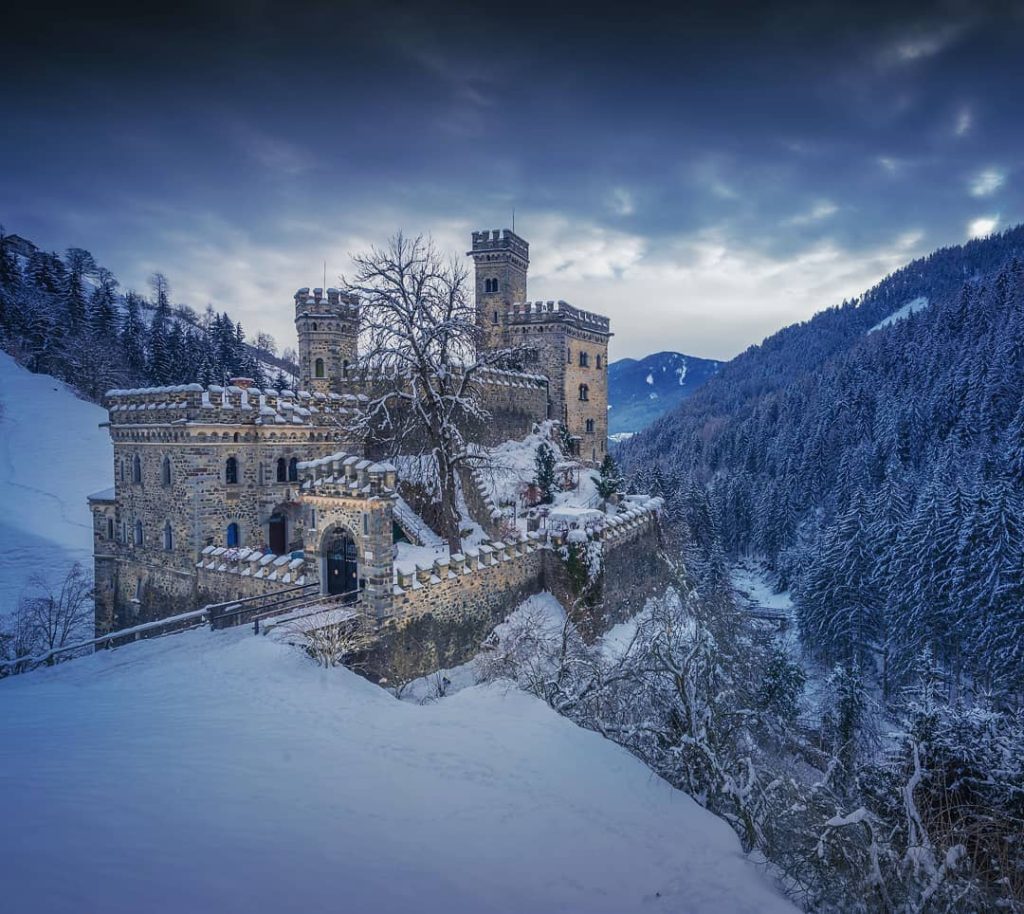Italy is a land of saints, poets, navigators, but also of castles. From North part a Su the rubber/pvc boots in fact it is possible to admire more or less large castles, with particular characteristics (such as that of sperlinga carved into the rock) or known to the general public or less known. To this last category belongs the Gernstein Castle, located in the territory of Closed (in the province of Bolzano), a municipality listed among the most beautiful villages in Italy. This castle is not exactly inside the city, but a few kilometers further north, in the Rio Tina valley, next to the village of Latzfons. Due to its location, this castle is also known as Castel Tina.
History of Gernstein Castle
Gernstein Castle (Schoss Gernstein in German) was built around Twelfth century. Its name derives from the ministerial of Bressanone, Heinrich Garre, first owner. In addition to being a splendid home, the castle had the function of protecting the copper mines adjacent (such as the Villandro mine). Copper was in fact a very precious metal and in demand for trade. Furthermore, Castel Tina is located on the ancient main street of the Val d'Isarco, one of the main valleys ofSouth Tyrol, which connected Bolzano to Bressanone. This allowed the Garre family to be able to control the entire area. The castle has in fact small towers suitable for this purpose.

In the first half of the XNUMXth century, the decline of Gernstein Castle began. The entire fiefdom was bought by the Prince Bishop of Bressanone, Matthäus an der Gassen, who gave it as a fief to the family Von vaitberg. In 1356 the revolt of the Voitberg subjects took place, with consequent siege of the castle by the prince-bishop, who regained control. In 1389, Castel Tina passed into the hands of the lords of Villandro. These remained its owners until the mid-sixteenth century, when it became the property of the Heydorf counts. However, Castel Tina was gradually forgotten, falling into disrepair. Only towards the end of the nineteenth century did it come back to life, thanks to the Prussian general Friedrich von Gerstein-Hohenstein. In fact, he decided to rebuild it, giving it a neo-Gothic aspect. In 1919, after the end of the First World War, Gernstein Castle became ownership of Italian State, until 1970, when it became Private property.
Chiusa: historic village a few km from Castel Tina
As already mentioned, Gernstein Castle is part of the city of Closed (Clausen in German). It is a small town of just over 5 thousand inhabitants about 30 km away from Bolzano. Its history is older than that of the castle. The first testimony dates back to 547 AD and is related to a monk who lived in Sabiona (The monastero homonym that still dominates the city and was later founded in 1686). The first mention of the city dates back to a document of King Conrad II of Franconia of 1027 (with the name of Clause). In the fourteenth century, thanks to the copper trade, the city saw its heyday. However, the city continued to prosper in the following centuries also thanks to the trade in Brenner railway (inaugurated in 1867), which made the arrival in the city more accessible.

What to see in Chiusa
The charm of Chiusa lies in its still intact medieval structure. From the mid-nineteenth century to the early twentieth century it was the destination of pilgrimage of many artists. These were attracted by the magic of the place and the fact that it was the birthplace of the medieval German poet, Walther von der vogelweide. This led Chiusa to be also known as the city of artists. Chiusa is a fascinating city not only for its picturesque houses and its own medieval structuree, but also for historical monuments. Besides Castel Tina, the city is also known for monastery of Sabiona, until last May 7, the seat of a community of Benedictine nuns. Of clear interest are also the Captain's Tower (part of the now lost Branzoll Castle), The church of Sant'Andrea and civic Museum. The latter is located in the premises of theformer Capuchin convent, dating back to the mid-seventeenth century.

Even if the Gernstein Castle is not accessible to the public, if you are on holiday in Bolzano, it is also worth visiting Chiusa, especially during the winter period, to enjoy the suggestive Christmas markets and try i typical Tyrolean dishes, such as cured meats, cheeses, i dumplings or the ravioli of Val d'Isarco, perhaps accompanied by a good glass of local wine. Seeing is believing.
Cover photo: © Piqsels.





